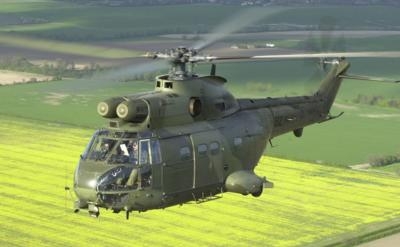Sat, Feb 13, 2021
AD 2021-04-04 Retains The Requirements Of AD 2020-19-02 And Also Clarifies The Applicability
The FAA is superseding Airworthiness Directive (AD) 2020-19-02, which applied to certain Airbus Helicopters (previously Eurocopter France) Model SA330J helicopters.

AD 2020-19-02 required repetitively inspecting affected tail rotor (T/R) blades and depending on the inspection results, repairing or replacing the T/R blade. AD 2020-19-02 also prohibited installing an affected T/R blade unless it passed the inspections. This AD retains the requirements of AD 2020-19-02 and also clarifies the applicability, clarifies the affected T/R blades in the required actions, reduces a compliance time, and corrects the prohibition requirement. This AD was prompted by the determination that these corrections are necessary. The FAA is issuing this AD to address the unsafe condition on these products. This AD becomes effective March 1, 2021.
Supplementary Information: The FAA issued AD 2020-19-02, Amendment 39-21243 (85 FR 59416, September 22, 2020) (AD 2020-19-02), for certain Airbus Helicopters (previously Eurocopter France) Model SA330J helicopters. AD 2020-19-02 required, for each T/R blade part number (P/N) 330A12-0005-(all dash numbers) and 330A12-0006-(all dash numbers), repetitively accomplishing a visual and in-depth inspection for debonding and eddy current inspecting for a crack. If there was debonding within allowable limits, AD 2020-19-02 required repairing or replacing the T/R blade. If there was debonding that exceeded allowable limits or a crack, AD 2020-19-02 required replacing the T/R blade.
AD 2020-19-02 also prohibited installing an affected T/R blade unless it passed the inspections. AD 2020-19-02 was prompted by EASA AD No. 2016-0059-E, dated March 22, 2016 (EASA AD 2016-0059-E), issued by the EASA, which is the Technical Agent for the Member States of the European Union, to correct an unsafe condition for Airbus Helicopters (formerly Eurocopter, Eurocopter France, Aerospatiale) Model SA 330 J helicopters. EASA AD 2016-0059-E retains the requirements of Direction Générale de l'Aviation Civile (DGAC) France AD 87-032-052(B)R3, dated January 23, 1991, which it supersedes, and also mandates improved service instructions. EASA advises of two reports of cracked metal T/R blade skin, which subsequently led to rotor blade vibrations and forced landing of the helicopter. According to EASA, this condition, if not addressed, could result in additional occurrences of T/R blade structural damage, possibly resulting in significant vibrations and reduced control of the helicopter.
More News
Light Gun A handheld directional light signaling device which emits a brilliant narrow beam of white, green, or red light as selected by the tower controller. The color and type of>[...]
“We have performed extensive ground testing by comparing warm up times, full power tethered pulls, and overall temperatures in 100 degree environments against other aircraft >[...]
While Taxiing To Parking The Right Landing Gear Leg Collapsed, Resulting In Substantial Damage Analysis: The pilot made a normal approach with full flaps and landed on the runway. >[...]
From 2014 (YouTube Edition): Exotic Rebuild Reveals Aerial Work Of Art During EAA AirVenture 2014, ANN's Michael Maya Charles took the time to get a history lesson about a great ai>[...]
Also: Project Talon, McFarlane Acquisition, Sky-Tec Service, JPL Earth Helo Tests Bombardier has earned a round of applause from the business aviation community, celebrating the fo>[...]
 ANN's Daily Aero-Term (12.13.25): Light Gun
ANN's Daily Aero-Term (12.13.25): Light Gun Aero-News: Quote of the Day (12.13.25)
Aero-News: Quote of the Day (12.13.25) NTSB Final Report: Gippsland GA-8
NTSB Final Report: Gippsland GA-8 Classic Aero-TV: Historically Unique -- Marlin Horst's Exquisite Fairchild 71
Classic Aero-TV: Historically Unique -- Marlin Horst's Exquisite Fairchild 71 Airborne 12.12.25: Global 8000, Korea Pilot Honors, AV-30 Update
Airborne 12.12.25: Global 8000, Korea Pilot Honors, AV-30 Update



